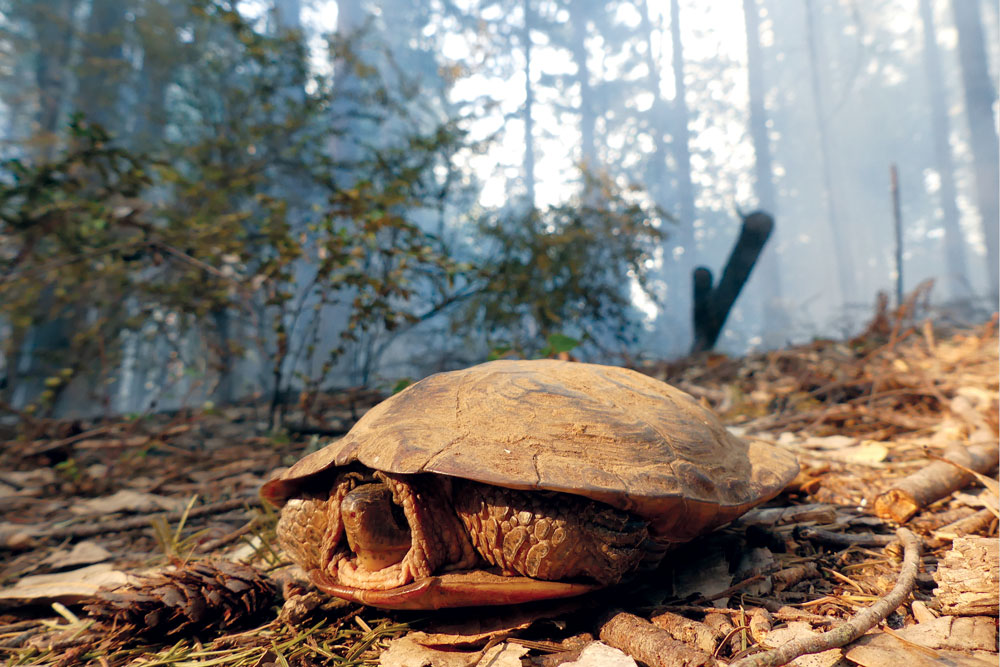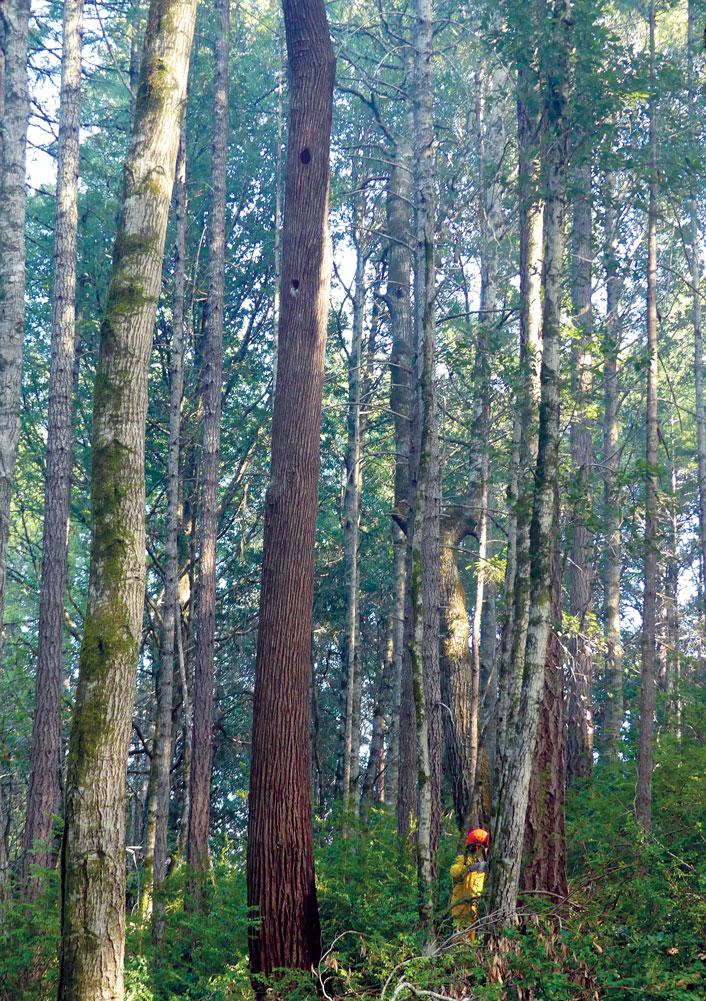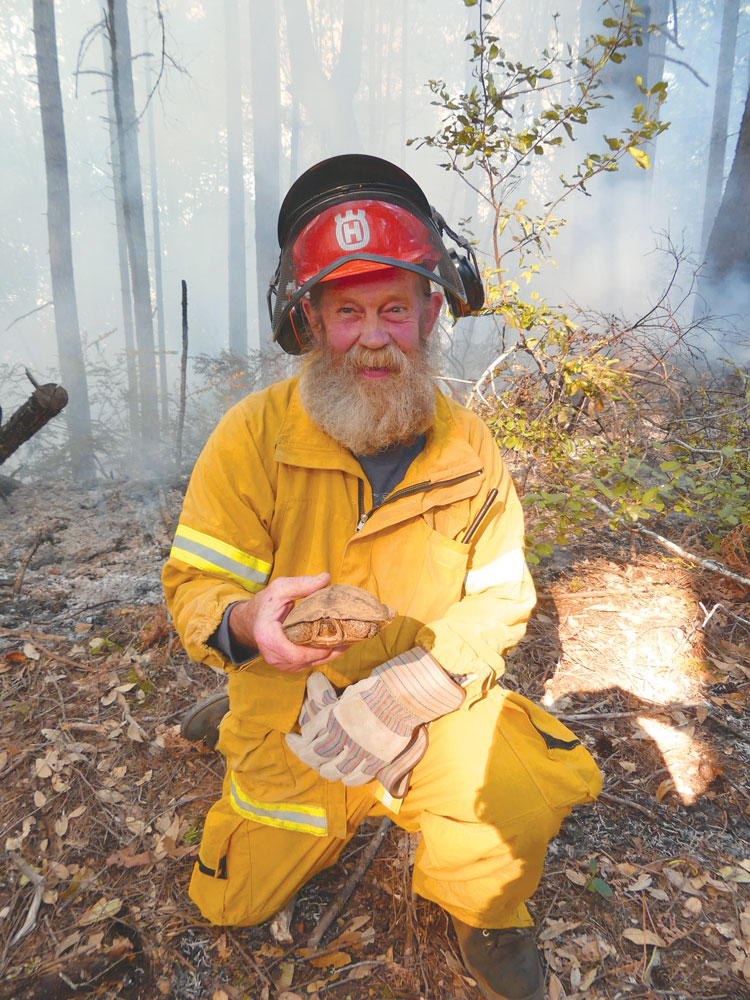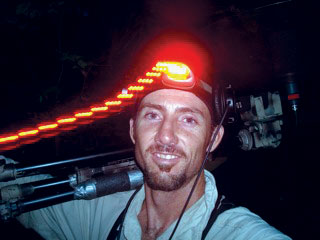Living With Fire
The Old Briceland Ridge Prescribed Fire:
An Ecological Field Observer’s Perspective

By Kyle Keegan
Ecological Restoration Is Not a Race: Lessons from Western Pond Turtle
It was a 70-degree afternoon in February 2022 on Old Briceland Ridge: 1,960 feet of elevation amidst stands of Douglas-fir, scattered Tanoak, and Chinquapin. Winds were light out of the southwest, and relative humidities were in the high 40s. Fire had already been on the ground for a few hours and was burning actively at a low intensity and a slow rate of spread. The land was actively being engaged by a diverse group of volunteer firefighters, CAL FIRE, and a few Southern Humboldt Prescribed Burn Association members. We had all come together to train and provide support for a planned prescribed fire on private land. For some of us this would be the third time in ten days that we had come together to practice and learn more about the art of prescribed (Rx) Fire.
Harry Vaughn and I were on site shadowing each other in a newly formed position as Ecological Field Observers (EFOBS). Our focus was on reading the landscape and applying our skills of place-based knowledge to help guide firing operations to optimize ecological objectives, while minimizing harm from excessive fire severity.

Harry was keeping close watch over a large Chinquapin snag that he had located that showed signs of an active owl cavity (most likely Western Screech Owl or Saw-whet Owl). We had cleared a small area around the snag and removed adjacent brush to make sure it did not catch fire. A fire truck was situated nearby to provide a little dousing of water, if needed. Rx Fire was applied to the area and was doing its job of consuming fuels, re-mineralizing soils, and making the forested area more resilient to future wildfires. We watched and waited as the flames slowly crept through the understory.
Moments later Harry gave a solid call out and began walking fast towards me holding something gingerly in his hands while yelling, “What do I do with this?” I was in absolute disbelief to see what Harry had found—a Western Pond Turtle! It was a female covered in soil from being in hibernation. She had walked out of the burning landscape uninjured and was attempting to cross the road seeking refuge. The message she delivered could not be ignored—Turtle as teacher.

Ecological Restoration
Harry and I were there to provide ecological knowledge based on decades of direct experience and dedication to studying our home place. But at this moment it became very clear: We know next to nothing about these complex systems that we are attempting to “restore.” Who would have expected to find a Western Pond Turtle hibernating on a dry ridge nowhere near water in a coniferous forest at nearly 2,000 feet of elevation? We were left feeling humbled, yet inspired to embrace that humility and to learn from our experience.
Fire-exclusion ideologies have left us with a legacy of unintended consequences. Western Pond Turtle came at a crucial moment in our prescribed fire journey to remind us to slow down and continually reassess our restoration objectives to help us avoid leaving another legacy of unintended consequences to future generations. After nearly a century of fire suppression, it can feel like we are rushing to make up for lost time. Our experience on Old Briceland Ridge delivered a powerful, turtle-borne message—ecological restoration is not a race.

